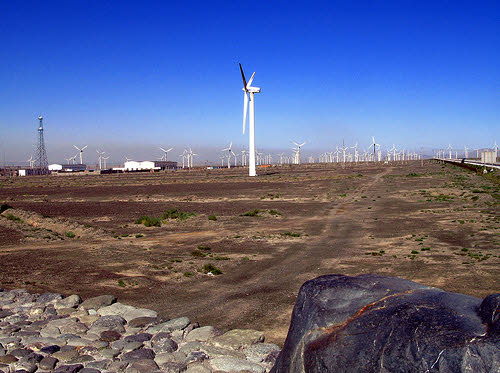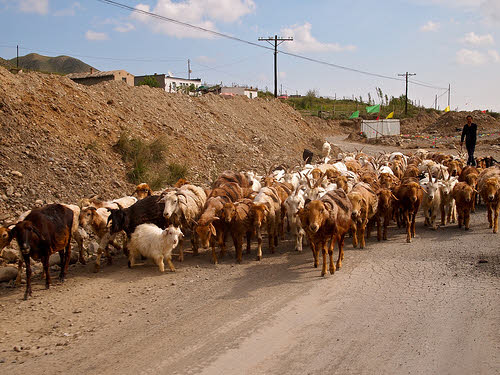Even amid policy uncertainty in major wind power markets, wind developers still managed to set a new record for installations in 2012, with 44,000 megawatts of new wind capacity worldwide. With total capacity exceeding 280,000 megawatts, wind farms generate carbon-free electricity in more than 80 countries, 24 of which have at least 1,000 megawatts. At the European level of consumption, the world’s operating wind turbines could satisfy the residential electricity needs of 450 million people.
Tag: China
Wind Power Surpasses Nuclear in China
Wind has overtaken nuclear as an electricity source in China. In 2012, wind farms generated 2 percent more electricity than nuclear power plants did, a gap that will likely widen dramatically over the next few years as wind surges ahead.
China’s Rising Soybean Consumption Reshaping Western Agriculture
Global demand for soybeans has soared in recent decades, with China leading the race. This growth has environmental impact well beyond Asia, as Lester Brown demonstrates.
Expanding Dust Bowls Worsening Food Prospects in China and Africa
When most people hear the term “dust bowl,” they think of the American heartland in the 1930s, when a homesteading wheat bonanza led to the plowing up of the Great Plains’ native grassland, culminating in the greatest environmental disaster in U.S. history. Unfortunately, this phenomenon isn’t just relics of the past.
Hydropower Continues Steady Growth
World hydroelectric power generation has risen steadily by an average 3 percent annually over the past four decades. In 2011, at 3,500 billion kilowatt-hours, hydroelectricity accounted for roughly 16 percent of global electricity generation, almost all produced by the world’s 45,000-plus large dams. Today hydropower is generated in over 160 countries.
Fukushima Meltdown Hastens Decline of Nuclear Power
With the world’s fleet of reactors aging, and with new plants suffering construction delays and cost increases, it is possible that world nuclear electricity generation has peaked and begun a long-term decline.
Meat Consumption in China Now Double That in the United States
More than a quarter of all the meat produced worldwide is now eaten in China, and the country’s 1.35 billion people are hungry for more. In 1978, China’s meat consumption of 8 million tons was one third the U.S. consumption of 24 million tons. But by 1992, China had overtaken the United States as the world’s leading meat consumer—-and it has not looked back since.
Time to Slap a Tariff on Chinese Solar Panels?
Cheap Chinese solar panels are great for installers, but present a challenge for US solar manufacturers. Is it time to put a tariff on panels from China in order to level the playing field?
Global Wind Power Climbs to New Record in 2011
Wind energy developers installed a record 41,000 megawatts of electricity-generating capacity in 2011, bringing the world total to 238,000 megawatts. With more than 80 countries now harnessing the wind, there is enough installed wind power capacity worldwide to meet the residential electricity needs of 380 million people at the European level of consumption.
Aflatoxin: A Toxic Potential of Climate Change
One of the most toxic and carcinogenic threats in the human food supply is a natural chemical called “aflatoxin”; the chance that it will contaminate a crop is enhanced by drought and/or insect damage – both conditions expected to be more common with the onset of climate change.
Solar PV Breaks Records in 2010
Solar photovoltaic (PV) companies manufactured a record 24,000 megawatts of PV cells worldwide in 2010, more than doubling their 2009 output.
Learning from China: Why the Existing Economic Model Will Fail
By Lester R. Brown For almost as long as I can remember we have been saying that the United States, with 5 percent of the world’s people, consumes a third [ … ]
Why Does Organic Seem Larger Than It Is?
For a long time we have been hearing that “Organic is the fastest growing segment of the food industry.” Organic advocates make the claim that Organic could “feed the world” [ … ]













